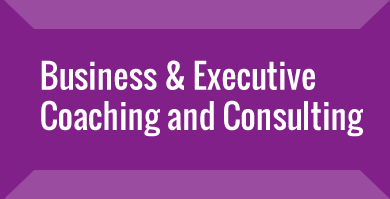It’s no surprise that employee engagement numbers have been abysmal for the last few years. According to Gallup, engaged employees comprise only around 30% of the workforce, and therefore it is no surprise, that reports indicate 70 percent of the nation's workforce hate their jobs.
Learning firsthand how to inspire, engage and lead people can directly impact the people in charge.
Outlined below are six innovative and progressive business trends to consider in order to improve employee engagement in your business.
1. Performance Management Technology 2.0. In their report, Predictions for 2017: Everything Is Becoming Digital, Bersin by Deloitte focused on how technology continues to change our lives and workplace cultures. The ubiquity of mobile devices means that we are always on, sending and receiving messages and accessing seemingly infinite media platforms 24 hours a day.
Technology alone cannot make people more engaged.
This tech revolution is also permeating the world of Human Resources(HR). Performance management has been gradually moving away from a focus on annual employee reviews, to real time feedback tools. Over the past few years we have seen companies like Adobe, GE, and Microsoft make these transformations and that trend will continue. It is uncertain whether the annual performance review will disappear altogether, but it will at the very least be augmented by more regular communication between employees and managers. This is a very big plus for improving morale.
In the coming year, more software companies will continue to emerge that provide performance reviews, 360 degree feedback, pulse surveys, and OKR tracking (objectives and key results). Companies that know success is created by helping their employees succeed will be adopting these technologies.
2. Data Focused HR and Management Software. While we’re on the topic of technology, let’s talk about people analytics. This often takes the form of management software platforms where people are asked metrics-based feedback questions. Employee productivity (performance relative to stated goals and key objectives within a specified time frame) will now be measured and catalogued.
Managers and other company leaders will review this data via performance management dashboards. They can see at-a-glance employee performance numbers company-wide, and drill down to analyse team engagement and individual contributors.
According to Human Resources Today, people analytics ranks among the top ten human capital trends in 2017-18.
Further,in 2018, predictive talent models will help HR departments recruit and promote the right individuals into the right jobs.
3. Organisational De-structure Will Improve Employee Engagement. Based on their latest Human Capital Trends study of over 7,000 companies worldwide, Deloitte found that the vast majority of companies (92%) don’t think that they are organised correctly.
Many are shifting away from a top-down hierarchical structure to more horizontal or lattice type structures. The former exists to create individual teams for scalable efficiency, but today’s markets are not optimised for those factors since rapid innovation has increased the speed and quantity of competition. You can scale a department via a hierarchical structure and then have your entire product offering supplanted by a crafty competitor.
These shifts will improve employee engagement by allowing people to be more effective at what they do and by seeing the impacts of their contributions.
We know from studies in behavioural economics that people are motivated by seeing their contributions, which in turn increases employee satisfaction and morale.
4. Performance Management Strategy Will Change. Bersin and his team predict a massive shift where basically every leader in every business will have to be focused on employee wellness. In the report referenced above, they share extensive data on how productivity and workforce engagement has slowed, while the amount of hours worked has increased and holiday leave time taken has decreased.
For HR, instead of managing performance review processes, employee onboarding, and health & wellness programs, HR must focus holistically on how they can help people and teams perform better.
5. More Employee Recognition Programs. Recognition is the key to employee engagement and it is backed up by Gallup research from an employee feedback survey: Two-thirds of employees, who said they hadn’t received any recognition in the last seven days, were twice as likely to say they would leave the company as the other workers when asked.
Of course how employee recognition is delivered impacts how it is received. Is it specifically tied to work performed, or a baseless platitude designed to keep employees happy? How frequently is it given? Is it shared publicly across the team to amplify the impact? Is it accompanied by a tangible reward?
According to The US Society for Human Resource Management, staff recognition ranks in the top 10 factors influencing employee job satisfaction. And according to PWC, how employee recognition is given does matter. 41% of millennials prefer to be rewarded or recognised for their work at least monthly, if not more frequently.
6. Performance, Culture, & Engagement – Together! The importance of building strong work cultures, fostering employee engagement, and managing employee performance have had organisations, historically think of these three critical factors as separate and distinct. In the coming year, as performance management becomes more of a holistic practice, managers will consider them together.
The interplay of building organisational culture, fostering high employees engagement, and focusing on performance management (namely vision, strategy, objectives, alignment and execution), is in essence an ecosystem that must be focused on as a whole in order to ultimately achieve high employee performance.
Why does employee engagement persist as a focal point for performance management experts and HR leaders? Because, it is directly linked to other factors that matter to every business owner. According to Gallup, engaged teams show dramatically higher job retention rates and lower absenteeism, 17% higher productivity, and 21% greater profitability.
For the coming year and beyond, technology will continue to permeate every aspect of our collective existence, both personally and professionally. But performance management tools alone cannot increase employee engagement (and in many cases can be more of a distraction than a benefit).
No, it will be the managers, human resource professionals and business leaders who have the greatest impact throughout an employee’s lifecycle. They must ultimately make the people-centric decisions to create work cultures where people are naturally inspired to bring their best every day.



























